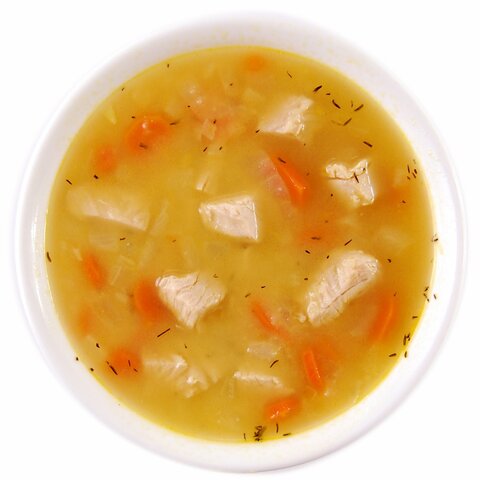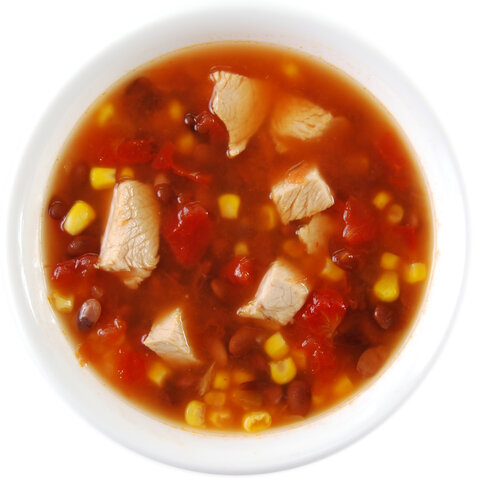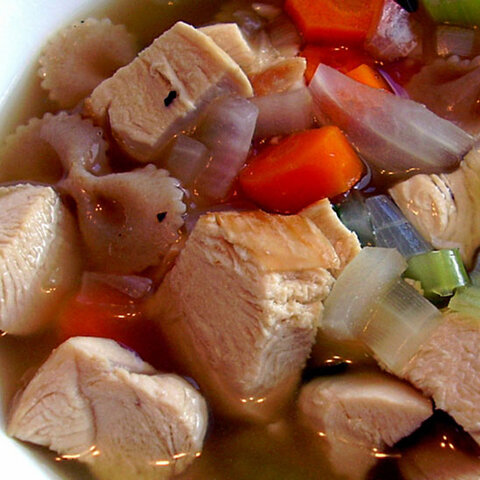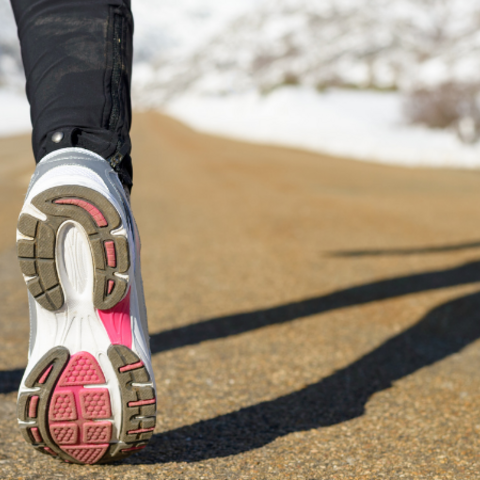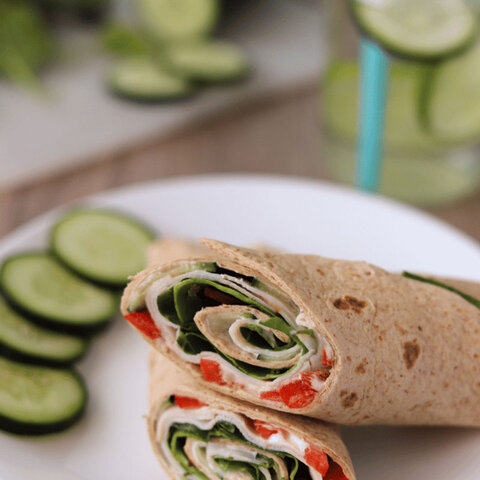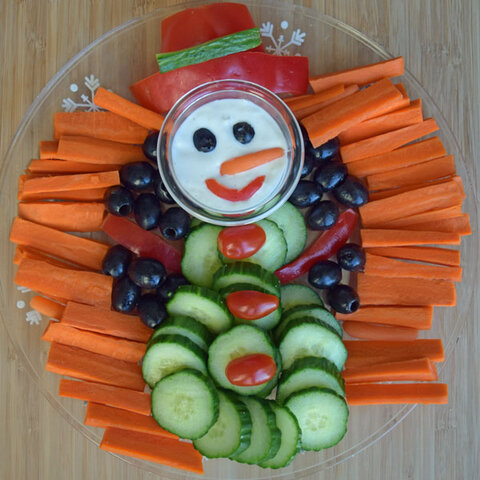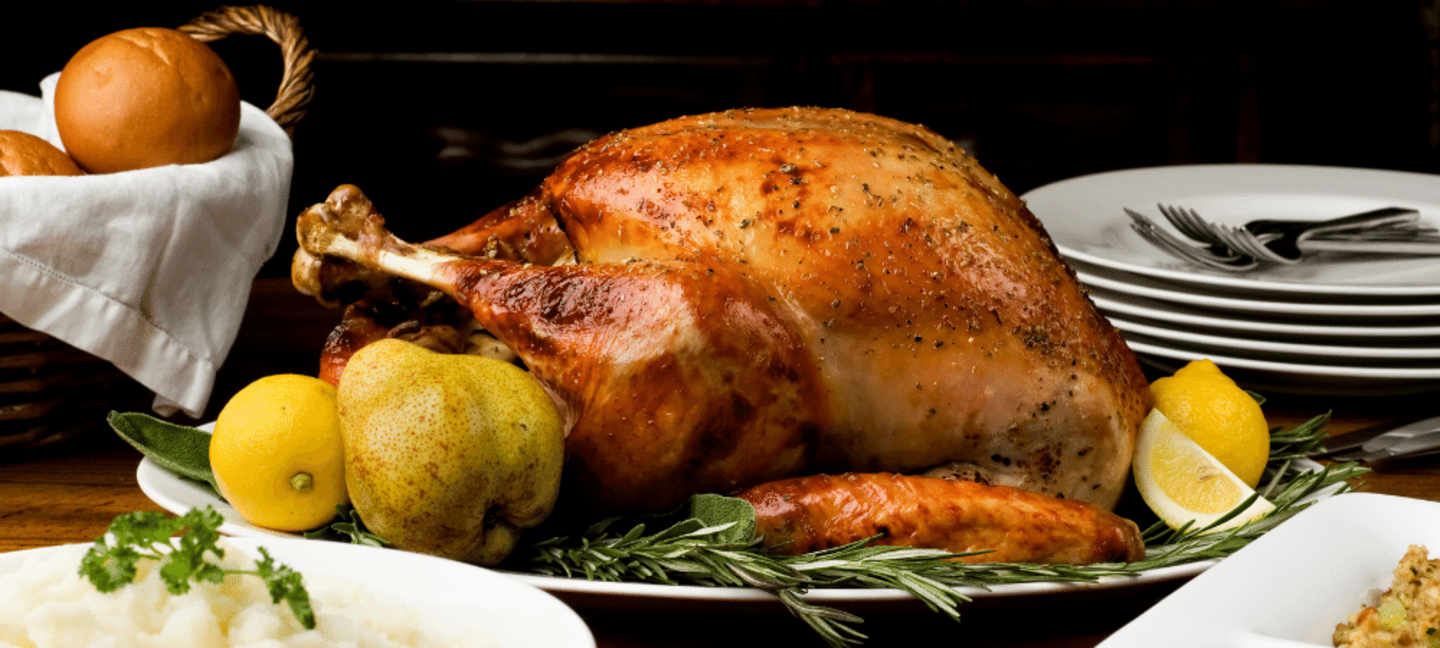
Cooking a turkey can be overwhelming whether you are cooking your first turkey or you are an experienced cook. Follow these steps to learn how to plan, cook, serve, store, and reheat turkey.
PLAN
It is important to plan your menu several weeks before the holiday to cut down anxiety and stress. If you are planning to cook a turkey, you need to take the following into consideration prior to Thanksgiving or another holiday gathering.
When to Buy Fresh or Frozen Turkey
There is no difference in quality between a fresh or frozen turkey, but it is important to keep a couple things in mind when determining to buy a fresh or frozen turkey.
- Fresh Turkey: If you buy a fresh turkey, be sure to purchase it only 1-2 days before cooking. Do not buy a pre-stuffed fresh turkey. Learn more about the safety of pre-stuffed turkeys.
- Frozen Turkey: You can buy a frozen turkey at any time as long as you have enough storage space in your freezer. Remember to cook a frozen turkey within 1 year for best quality. USDA recommends only buying frozen pre-stuffed turkeys that display the USDA or State mark of inspection on the packaging.
What Size of Turkey to Buy
The general recommendation is to allow 1 pound of fresh or frozen turkey per person. Use the following chart as a helpful guide:
| Type of Turkey | Pounds to Buy |
|---|---|
| Whole bird | 1 pound per person |
| Boneless breast of turkey | ½ pound per person |
| Breast of turkey | ¾ pound per person |
| Prestuffed frozen turkey | 1¼ pounds per person - keep frozen until ready to cook |
How to Thaw a Turkey
There are three ways to thaw your turkey safely: in the refrigerator, in cold water, or in the microwave oven. The preferred method is in the refrigerator, but it is important to plan ahead. The other methods are quicker if needed. It is safe to cook a turkey from the frozen state. The cooking time will take at least 50 percent longer than recommended for a fully thawed turkey.
- In the Refrigerator: Place the frozen turkey in the original wrapper on a pan or in a container to prevent the juices from dripping on other food. Put in the refrigerator (40 °F or below) and allow approximately 24 hours per 4 to 5 pounds. A thawed turkey can remain in the refrigerator for 1-2 days. The following times are suggested thawing times in the refrigerator.
| Size of Whole Turkey | Number of Days |
|---|---|
| 4 to 12 pounds | 1 to 3 days |
| 12 to 16 pounds | 3 to 4 days |
| 16 to 20 pounds | 4 to 5 days |
| 20 to 24 pounds | 5 to 6 days |
- In Cold Water: If you forget to thaw the turkey or don't have room in the refrigerator for thawing, don't panic. Be sure the turkey is in a leak-proof plastic bag to prevent cross-contamination and to prevent the turkey from absorbing water. Submerge the turkey in cold water and change the water every 30 minutes. Allow about 30 minutes defrosting time per pound of turkey. A turkey thawed in cold water should be cooked immediately. The following times are suggested thawing times in cold water.
| Size of Whole Turkey | Number of Hours |
|---|---|
| 4 to 12 pounds | 2 to 6 hours |
| 12 to 16 pounds | 6 to 8 hours |
| 16 to 20 pounds | 8 to 10 hours |
| 20 to 24 pounds | 10 to 12 hours |
- In the Microwave Oven: Microwave thawing is safe if the turkey is not too large. Check the manufacturer's instructions for the size of turkey that will fit into your microwave oven, the minutes per pound, and the power level to use for thawing. Cook immediately after thawing.
COOK
There are a variety of ways to cook a turkey, but the most common is roasting. Follow the roasting instructions below or try an alternate way to cook a turkey. Did you know that you can cook a turkey the day before serving it?
Roasting a Turkey
Follow these steps to safely cook a turkey:
- Set your oven temperature no lower than 325°F.
- Wash hands with soap and water before and after handling the turkey.
- Remove the giblet package before cooking.
- Place your turkey breast-side up on a flat wire rack in a shallow roasting pan (2 to 2½ inches deep).
-
- Optional steps:
-
- Tuck wing tips back under shoulders of bird (called "akimbo").
- Add one-half cup water to the bottom of the pan.
- If using an oven cooking bag, follow the manufacturer's guidelines on the package.
- In the beginning, a tent of aluminum foil may be placed loosely over the breast of the turkey for the first 1 to 1½ hours, then removed for browning. Or, a tent of foil may be placed over the turkey after the turkey has reached the desired golden brown color.
- For optimum safety, it is not recommended to stuff your turkey. Instead place stuffing in a casserole dish to cook. Use a food thermometer to check that the stuffing reaches an internal temperature of 165 °F before serving.
-
- If you choose to stuff your turkey, it is important to follow food safety guidelines in order to keep everyone safe. Keep wet and dry ingredients separate if you prepare ingredients ahead of time. Chill all of the wet ingredients (butter/margarine, cooked celery and onions, broth, etc.). Mix wet and dry ingredients just before filling the turkey cavities. Fill the cavities loosely. Cook the turkey immediately. Use a food thermometer to make sure the center of the stuffing reaches a safe minimum internal temperature of 165 °F.
- Use the following timetables to determine how long to cook your turkey. These times are approximate. Always use a food thermometer to check the internal temperature of your turkey and stuffing. It is safe to cook a turkey from the frozen state. The cooking time will take at least 50 percent longer than recommended for a fully thawed turkey. If cooking from frozen, remember to remove the giblet packages during the cooking time. Remove carefully with tongs or a fork.
| Size | Time |
|---|---|
| 4 to 8 pounds (breast) | 1½ to 3¼ hours |
| 8 to 12 pounds | 2¾ to 3 hours |
| 12 to 14 pounds | 3 to 3¾ hours |
| 14 to 18 pounds | 3¾ to 4¼ hours |
| 18 to 20 pounds | 4¼ to 4½ hours |
| 20 to 24 pounds | 4½ to 5 hours |
| Size | Time |
|---|---|
| 6 to 8 pounds (breast) | 2½ to 3½ hours |
| 8 to 12 pounds | 3 to 3½ hours |
| 12 to 14 pounds | 3½ to 4 hours |
| 14 to 18 pounds | 4 to 4¼ hours |
| 18 to 20 pounds | 4¼ to 4¾ hours |
| 20 to 24 pounds | 4¾ to 5¼ hours |
- A whole turkey is safe when cooked to a minimum internal temperature of 165 °F as measured with a food thermometer. Check the internal temperature in the innermost part of the thigh and wing and the thickest part of the breast. For reasons of personal preference, consumers may choose to cook turkey to higher temperatures.
-
- If your turkey has a "pop-up" temperature indicator, it is recommended that you also check the internal temperature of the turkey in the innermost part of the thigh and wing and the thickest part of the breast with a food thermometer. The minimum internal temperature should reach 165°F for safety.
- Learn how to choose a food thermometer.
- For quality, let the turkey stand for 20 minutes before carving to allow juices to set. The turkey will carve more easily. Learn how to carve the turkey by following these instructions or watching this quick video.
- If you stuffed your turkey, make sure to remove all stuffing from the turkey cavities. Use a food thermometer to check that the stuffing reaches an internal temperature of 165 °F before serving.
SERVE
When serving turkey, remember to:
- Always wash your hands with water and soap for 20 seconds before and after handling food.
- Clean kitchen surfaces, dishes and utensils with hot water and soap.
- Hot foods should be held at 140°F or warmer. Keep hot foods hot with chafing dishes, slow cookers, and warming trays.
- Throw out any turkey left at room temperature longer than 2 hours; 1 hour in temperatures above 90°F.
STORE
If you have leftover turkey, make sure it is safe to eat by properly storing it.
- Cut turkey into smaller pieces and refrigerate. Slice breast meat; legs and wings may be left whole.
- Keep turkey in the refrigerator and eat within 3 to 4 days or freeze. Use frozen turkey within 2 to 6 months for best quality.
Learn more about keeping leftovers safe from the USDA. Here are a few ideas for using those leftovers:
REHEAT
Cooked turkey may be eaten cold or reheated. Here is how to reheat turkey:
- In the Oven:
-
- Set the oven temperature no lower than 325°F.
- Reheat turkey to an internal temperature of 165°F. Use a food thermometer to check the internal temperature.
- To keep the turkey moist, add a little broth or water and cover.
- In the Microwave Oven:
-
- Cover your food and rotate it for even heating. Allow standing time.
- Check the internal temperature of your food with a food thermometer to make sure it reaches 165 °F.
- Consult your microwave oven owner's manual for recommended times and power levels.
Learn more about leftovers and food safety from the USDA.
Here are a few ideas for using Thanksgiving leftovers:
Source:
- Countdown to the Thanksgiving Holiday, United States Department of Agriculture
- Turkey Basics: Safe Thawing, United States Department of Agriculture
- Let's Talk Turkey-A Consumer Guide to Safely Roasting a Turkey, United States Department of Agriculture
- Turkey Basics: Safe Cooking, United States Department of Agriculture
- Holiday or Party Buffets, United States Department of Agriculture
- Leftovers and Food Safety, United States Department of Agriculture
- Thanksgiving Turkey Tips, Nebraska Extension
- Thanksgiving Food Safety, Nebraska Extension
- How to Cook a Turkey the Day before Serving It, Nebraska Extension
Tags:
